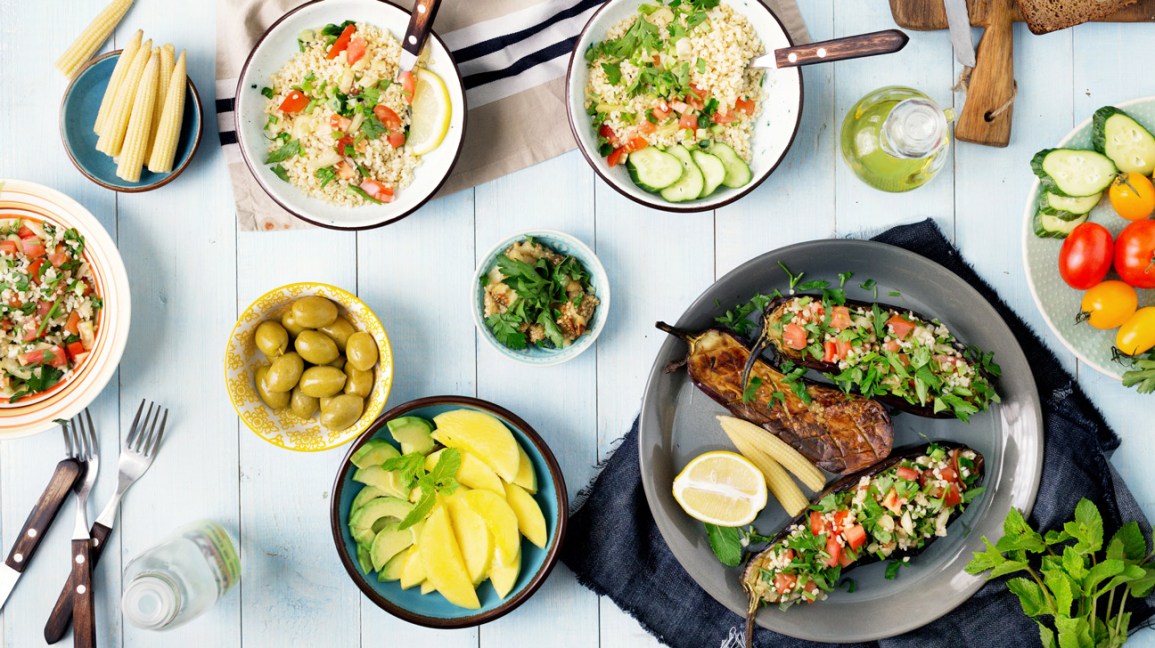
Your doctor may have given you specific recommendations regarding the types of foods you should avoid. You can still prevent high blood pressure becoming an issue by doing a few things. First, limit the consumption of processed foods and fatty cuts. Also, keep a record of all medications. It will save you time and help you remember to take them. It is a good idea to keep a list of all your medications with you at all time so that you can quickly refer to them.
Dr. Desai recommends getting as much exercise for those with high bloodpressure. Walking, swimming, running, elliptical machines, and tennis are all good options. Salt is a major enemy of high blood pressure. Salt can increase blood volume and cause high blood pressure. So, it's best to avoid eating foods containing too much salt.

Second, a healthy diet is essential. A healthy diet includes plenty of fruits, vegetables, low in saturated fat, and high levels of fiber. You can take vitamins, minerals, or whey to lower your blood sugar. And finally, you should try to reduce your intake of sugary beverages and alcohol. This will help lower your high blood pressure risk.
Third, reduce the amount of salt or saturated fat that you consume. Processed foods are often high in sodium and sugar so it is important to reduce your salt intake. Eat more fruits and vegetables. This will help lower your blood pressure. Limiting your alcohol intake is another option. High blood pressure patients should avoid alcohol. This is especially important if you are over 60 and have been drinking heavily for a long time.
As long as you're following the above tips, you'll be on the right track towards a healthier heart. These tips will hopefully help you to maintain healthy blood pressure and feel more confident. These tips will be of great help to you and your doctor. Once you've learned how to control your blood pressure, you'll be on your way to a healthier lifestyle. Once you've found the right balance, you'll be able to enjoy life and get the most out of it.

Limiting your alcohol intake is also important. A standard beverage contains 14 grams of alcohol, so drinking in moderation is the key to lowering your risk of high blood pressure. Avoid salty foods with too much sodium. A low-sodium diet can help maintain normal blood pressure. Additionally, it is important to reduce salt in your daily diet.
FAQ
Which diet is best for me?
The best diet for you depends on several factors, like your age, gender, weight, health conditions, and lifestyle habits. You also need to consider how much energy you expend during exercise, whether you prefer low-calorie foods, and if you enjoy eating fruits and vegetables.
Intermittent fasting may be a good choice if you want to lose weight. Intermittent eating means that you only eat specific meals throughout the day. This is in contrast to three large meals. This may be a better option than traditional diets with daily calorie counts.
Intermittent fasting is believed to increase insulin sensitivity. It may also reduce inflammation. This may lead to a decrease in diabetes risk and blood sugar levels. Research suggests that intermittent fasting can promote fat loss and improve overall body composition.
How often should you exercise?
Fitness is key to a healthy lifestyle. But, you don't need to spend a specific amount of time exercising. The key is finding something you enjoy and stick with it.
Three times a week, you should be aiming to complete 20-30 mins of moderate intensity activity. Moderate intensity is when you still have to breathe hard after the workout. This type of workout burns around 300 calories.
Walking is a great option if you are a keen walker. You can do 10-minute walks four days per week. Walking is low-impact, easy on your joints, and it's also very gentle.
You can also run for 15 minutes, three times per week. Running is a great way to burn off excess calories and build muscle tone.
You can start slow if you're new to exercise. Start by doing 5 minutes of cardio each day, a few times per week. Gradually increase the amount of cardio you do until you reach your goal.
What should I eat?
You should eat lots of vegetables and fruits. These fruits and vegetables are high in vitamins, minerals, which can help you keep your immune systems strong. Fruits and veggies are also high in fiber, which makes them filling and helps with digestion. Try to include at least five servings of fruit and veg per day.
Make sure you drink plenty of water too. Water helps flush toxins out of your body and makes you feel fuller between meals. Drink about eight glasses each day.
Whole grains are better than refined ones. Whole grains are rich in nutrients such as iron, zinc and magnesium. Refined grains lack some nutrition.
Avoid sugary drinks. Sugary drinks are full of empty calories and lead to obesity. Instead, choose water, milk, and unsweetened tea.
Avoid fast food. Fast food lacks nutritional value. Fast food may be delicious, but it will not give you the energy that you need to perform your tasks properly. Stick to healthier options such as salads, soups, sandwiches, and pasta dishes.
Try to limit alcohol intake. Alcohol contains empty calories and contributes to poor nutrition. Limit your intake to two alcoholic drinks per week.
Try to cut down on red meat. Red meats are high in saturated fat and cholesterol. Lean cuts of beef or pork, lamb and chicken, as well as fish, are better choices.
What should my weight be for my age and height? BMI calculator and chart
A body mass index calculator (BMI) is the best way to find out how much weight you should lose. A healthy BMI range is between 18.5 and 24.9. Aim to lose 10 pounds per month if your goal is to lose weight. Enter your height and weight to calculate your BMI.
Check out this BMI chart to determine if you are overweight or obese.
What is the working principle of an antibiotic?
Antibiotics are drugs that destroy harmful bacteria. The treatment of bacterial infections is done with antibiotics. There are many kinds of antibiotics. Some are given orally, while some are injected. Other antibiotics are applied topically.
Antibiotics are often prescribed to people who have been exposed to certain germs. For example, if someone has had chicken pox, he or she might take an oral antibiotic to prevent shingles later on. An injection of penicillin may be necessary to prevent pneumonia if someone has strep.
A doctor should give antibiotics to children. Children are more susceptible to side effects from antibiotics than adults.
Diarrhea being the most common side effect of antibiotics. Other possible side effects include stomach cramps, nausea, vomiting, allergic reactions, headaches, dizziness, and rashes. These symptoms usually go away after treatment ends.
Statistics
- The Dietary Guidelines for Americans recommend keeping added sugar intake below 10% of your daily calorie intake, while the World Health Organization recommends slashing added sugars to 5% or less of your daily calories for optimal health (59Trusted (healthline.com)
- nutrients.[17]X Research sourceWhole grains to try include: 100% whole wheat pasta and bread, brown rice, whole grain oats, farro, millet, quinoa, and barley. (wikihow.com)
- According to the Physical Activity Guidelines for Americans, we should strive for at least 150 minutes of moderate intensity activity each week (54Trusted Source Smoking, harmful use of drugs, and alcohol abuse can all seriously negatively affect your health. (healthline.com)
- In both adults and children, the intake of free sugars should be reduced to less than 10% of total energy intake. (who.int)
External Links
How To
How to Live a Healthy Lifestyle
A healthy lifestyle is one that allows you to maintain your weight, your health, and your fitness. Healthy living means eating right, exercising regularly, getting enough rest, and staying away from harmful substances like alcohol, tobacco, cocaine, and drugs. A healthy lifestyle can help you feel confident and fit. A healthy lifestyle can help reduce your risk of developing chronic diseases such as heart disease, strokes, diabetes, cancer and osteoporosis.
The goal of this project is to give a step by step guide on how to live healthier lives. The introduction of the project was the first. This describes what a healthy lifestyle looks like, why it is important, and who it is. Next, I wrote the body paragraphs. These include tips and tricks for maintaining a healthy lifestyle. Finally, I wrote the conclusion, which summarizes the whole article and provides some additional resources if needed.
I learned how to create a concise and clear paragraph through this assignment. I also learned how to organize my thoughts into topic sentences, and the supporting details. Additionally, I learned how to organize my ideas into topic sentences and supporting details. I learned proper grammar to write.